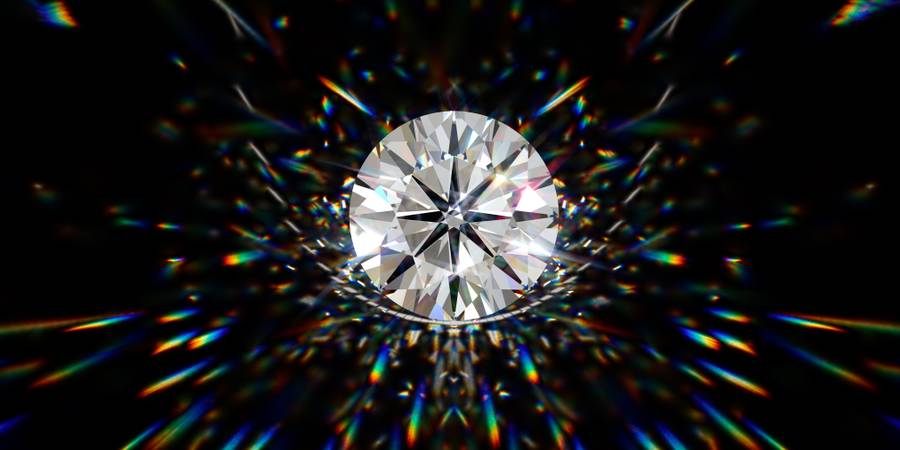Diamonds are a coveted luxury that not everyone has the privilege of owning. Whether you’re considering purchasing a diamond or already have one in your possession, you may find yourself wondering how to determine its authenticity without using specialized testers or equipment.
If you’re seeking assurance that your diamond is genuine but lack access to testing machines, fret not! We have compiled an excellent guide that presents alternative methods for discerning whether a diamond is real or fake.
While there are numerous ways to accomplish this, each method has its advantages and disadvantages. So, if you’re curious to explore these different approaches and discover your preferred option, continue reading.
Let’s delve into these alternative methods and uncover the truth about your diamond!
The Water Test
One of the simplest methods to determine the authenticity of a diamond, although not foolproof, is the water test.
Fill a glass halfway with water and carefully place the diamond into it. A genuine diamond, due to its high density, will sink to the bottom of the glass.
If the diamond floats on the water’s surface, it is likely a fake. However, it’s important to note that not all imitation diamonds will float, so additional tests may be needed.
The Heat Test
While this test may seem intimidating, it can help differentiate a genuine diamond from a fake.
Fill a glass halfway with cold water and put on fireproof gloves. Heat the diamond for approximately 30-40 seconds before quickly immersing it in the cold water.
A genuine diamond will not be affected by the heat, whereas a fake diamond may crack or break due to the rapid expansion and contraction caused by the temperature change.
We advise caution when conducting this test, as it carries a risk and should only be performed by those with experience. Safety should always be a priority.
The Fog Test
A quick and easy method to distinguish a natural diamond from a fake is the fog test.
Breathe on the diamond to fog it up. If the fog dissipates quickly, it indicates a genuine diamond. However, if the fog remains for three to four seconds, it is likely an imitation.
Diamonds have excellent heat conductivity, which prevents fog from lingering on the surface. In contrast, fake diamonds retain the fog due to lower heat conductivity.
Before conducting this test, ensure that the diamond is clean and free of any oils or residues that could affect the results.
UV Light Test
When exposed to ultraviolet or black light, most diamonds, although not all, exhibit a blue glow. This test can be used as an additional tool to verify the authenticity of a diamond.
However, it’s important to note that not all diamonds will emit the same blue light under UV light. Some diamonds may exhibit fluorescence in green, gray, or yellow hues. Therefore, the UV light test should be used cautiously and in conjunction with other tests.
It’s worth mentioning that certain treatments can make diamonds shine under UV light, and the presence of UV fluorescence alone does not guarantee a diamond’s authenticity.
Mounting and Setting Test
If the diamond is already set in a piece of jewelry, examining the setting and mount can provide clues about its authenticity.
Genuine diamonds are typically set in high-quality materials such as white gold, platinum, yellow gold, pave or side-stone settings, and halo settings.
Check for markings inside the ring’s band that indicate the type of metal used. For example, “10K,” “14K,” and “18K” indicate gold, while “PT” or “Plat” denotes platinum. Numeric markings like “585,” “770,” “900,” or “950” may also indicate gold or platinum.
The Sparkle Test
The sparkle test is a visual examination of the diamond’s optical qualities and can provide insights into its authenticity.
Place the diamond in front of a light source, such as a lamp, and observe how the light reflects off it. Ask yourself the following questions: Does the diamond exhibit a white, flickering quality (scintillation)? Are there any rainbow-colored reflections?
Authentic diamonds are prized for their scintillation and may exhibit rainbow reflections due to their optical properties.
To enhance the effectiveness of this test, it can be helpful to have a reference stone like cubic zirconia for comparison. This will enable you to identify significant differences between the two stones.
It’s important to note that a poorly cut diamond with low color grading and extensive inclusions may not exhibit the desired brilliance, making it challenging for an untrained eye to rely solely on this test.
DESIGN YOUR OWN ENGAGEMENT RING: START WITH A SETTING OR START WITH A DIAMOND. IT’S REALLY UP TO YOU!

Final Thoughts
In this article, we have provided simple and accessible methods for determining the authenticity of a diamond without the need for specialized testing equipment.
By utilizing everyday items like water, newspapers, and light, you can perform these tests at home to ensure that the diamond you possess is genuine and not an imitation or alternative stone.
We aimed to not only address the initial question of how to tell if a diamond is real without a tester but also provide detailed explanations of the straightforward techniques you can employ.
We hope you found this article informative and enjoyable, and that it has equipped you with the knowledge you need to confidently assess the authenticity of your diamonds.


